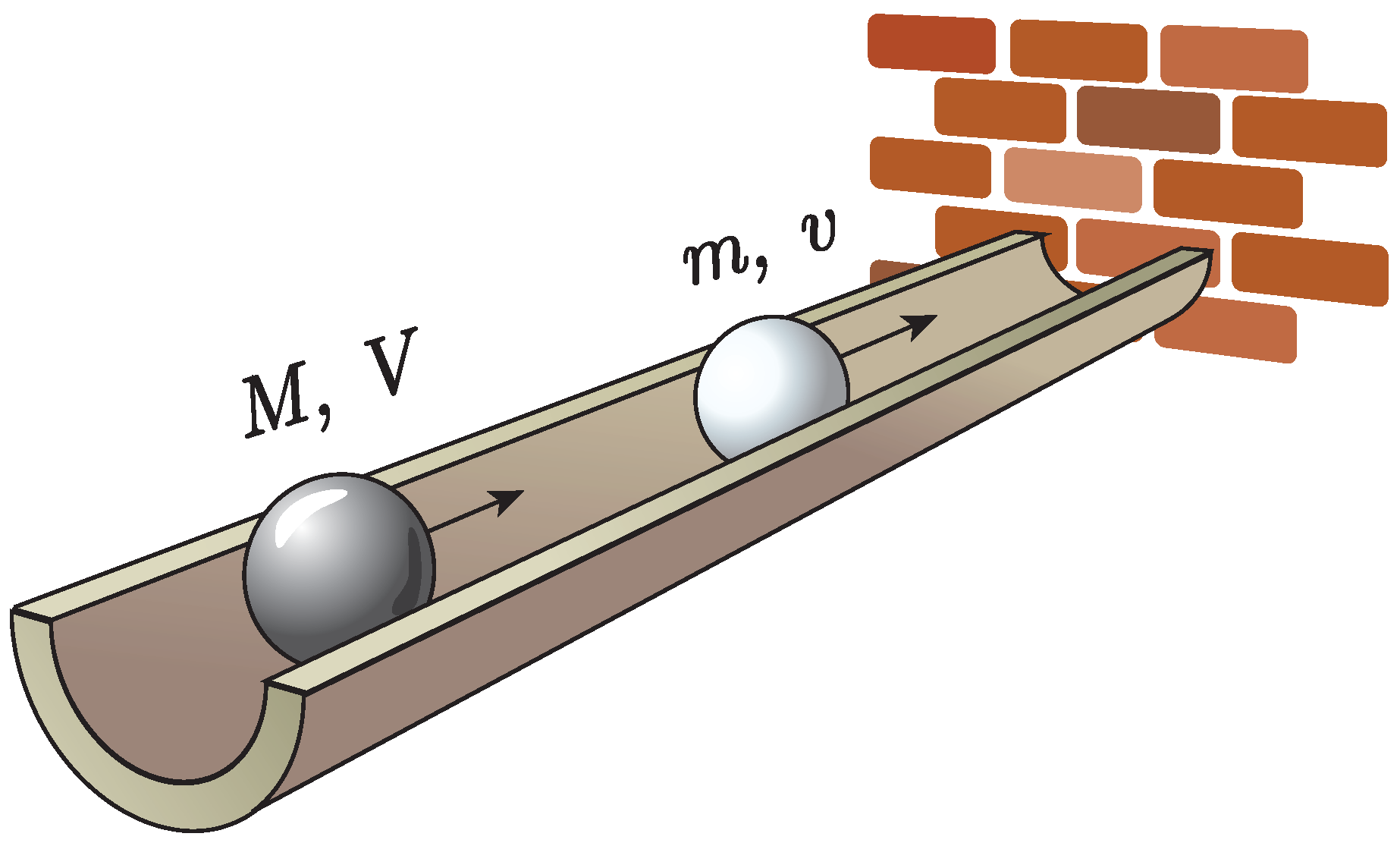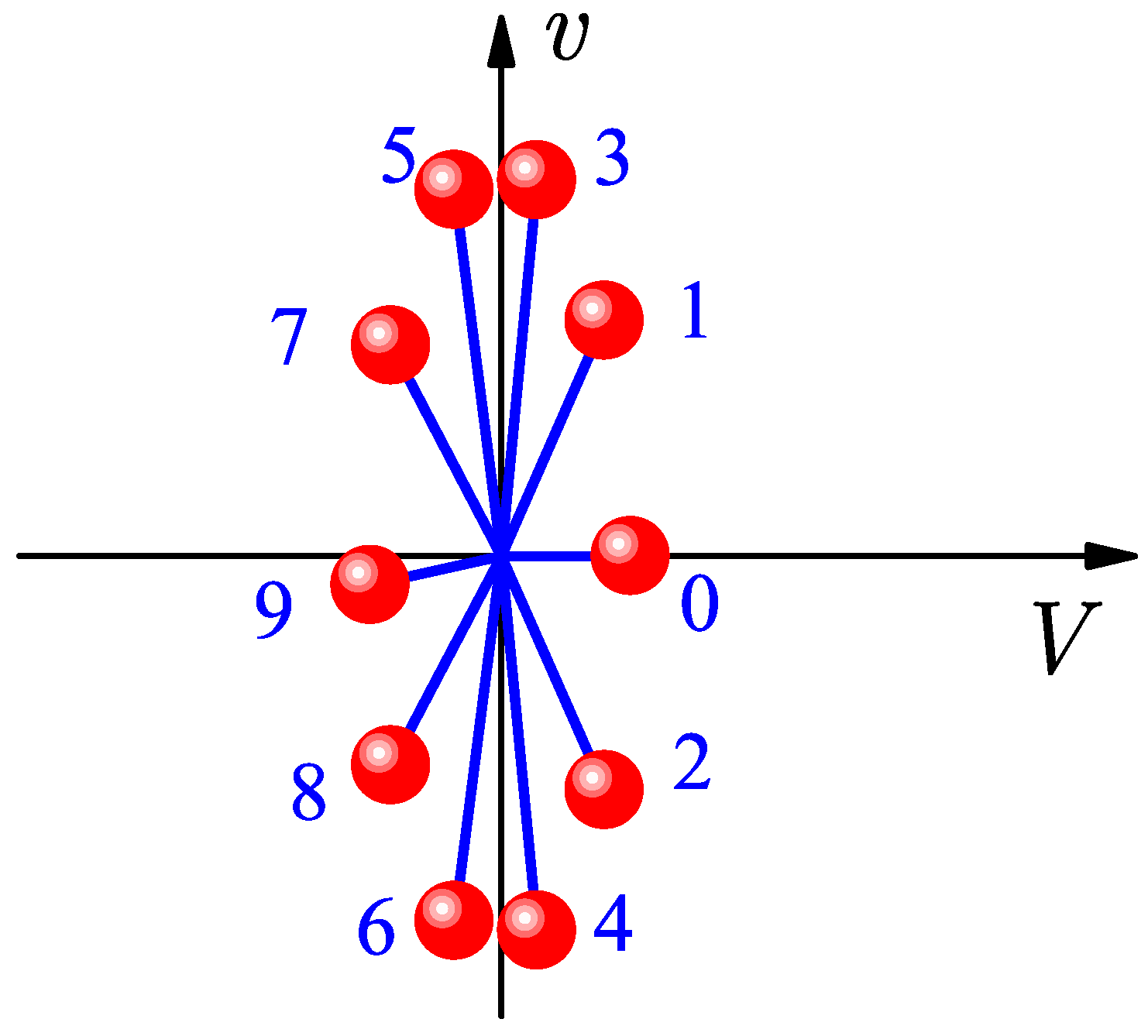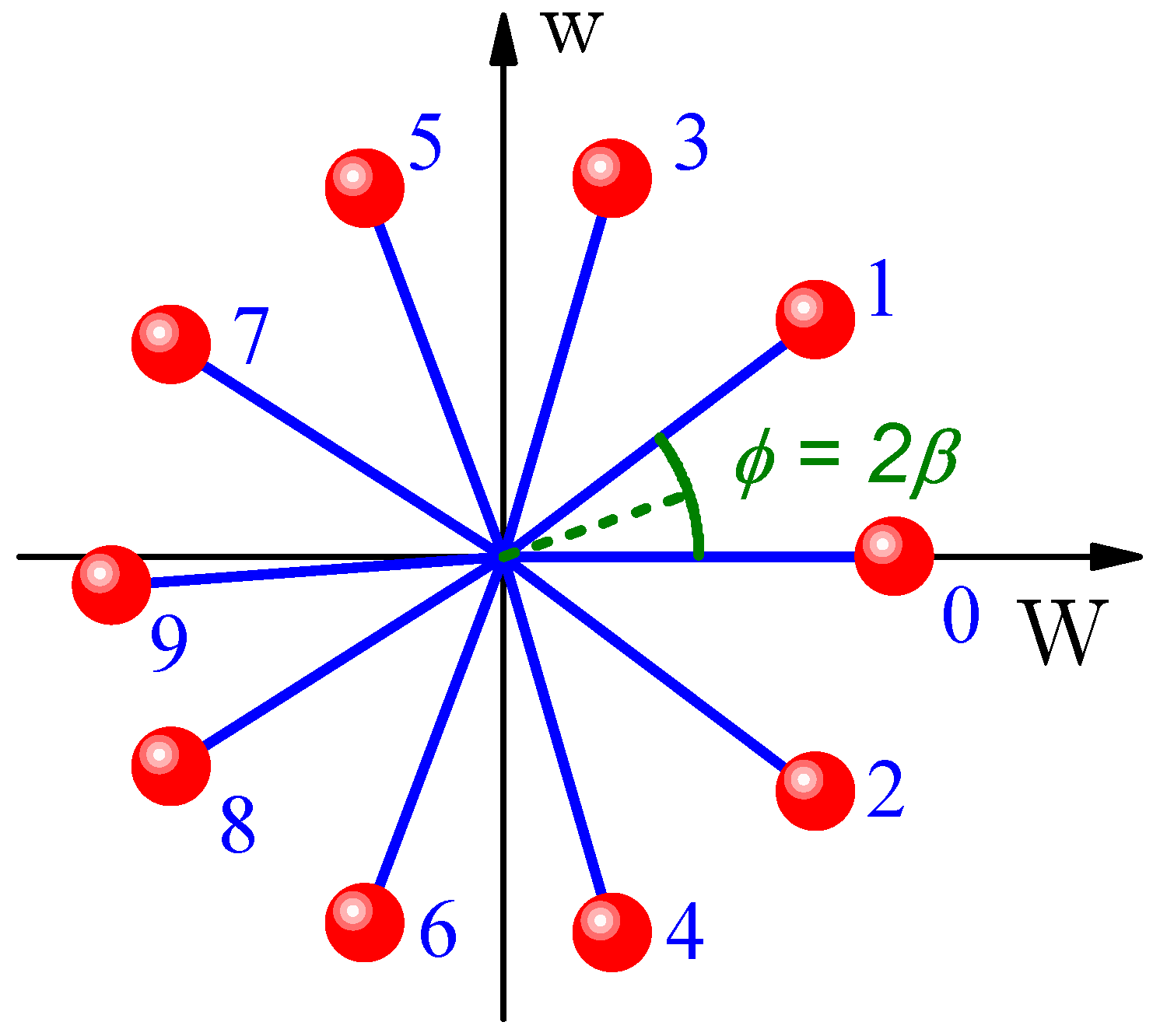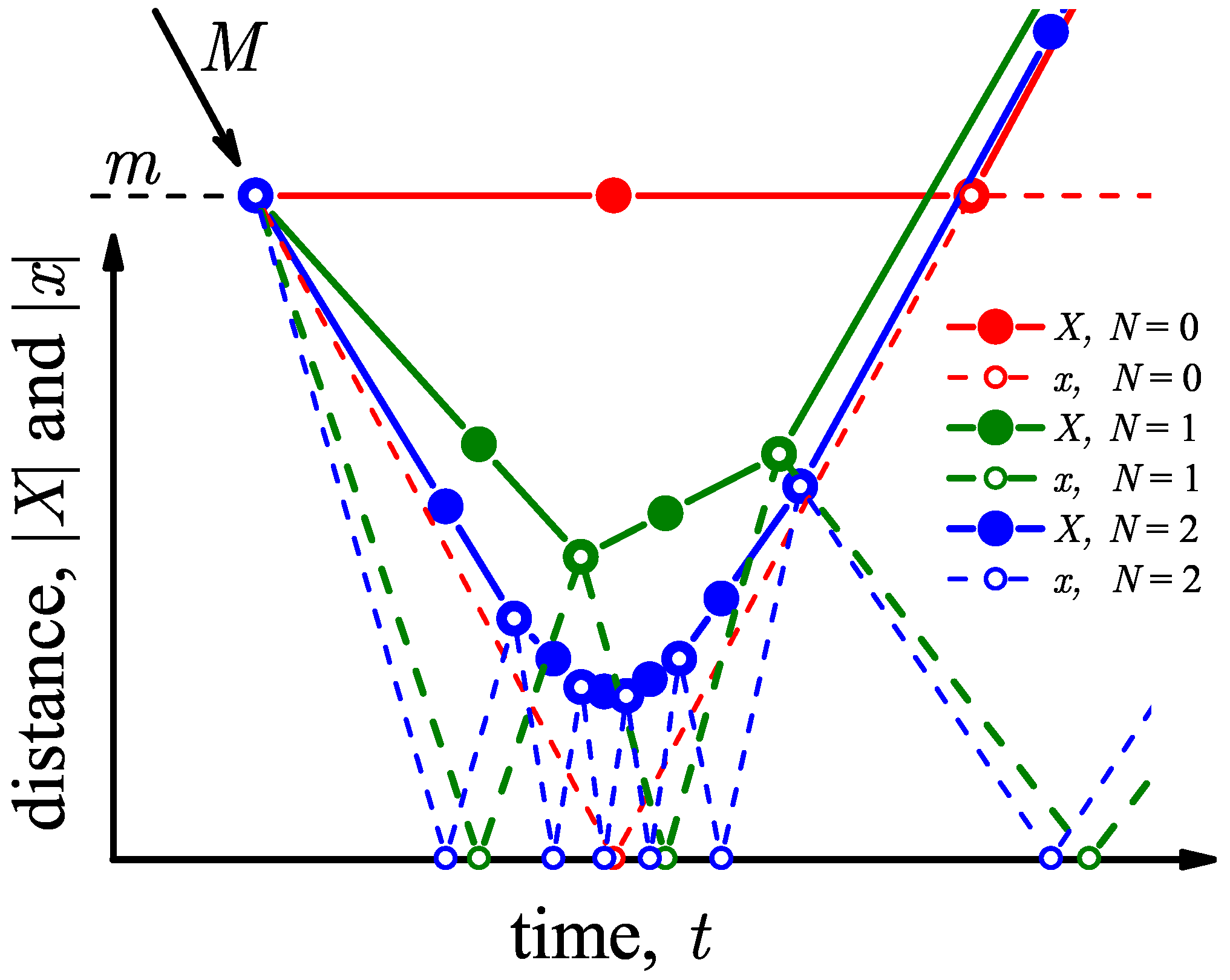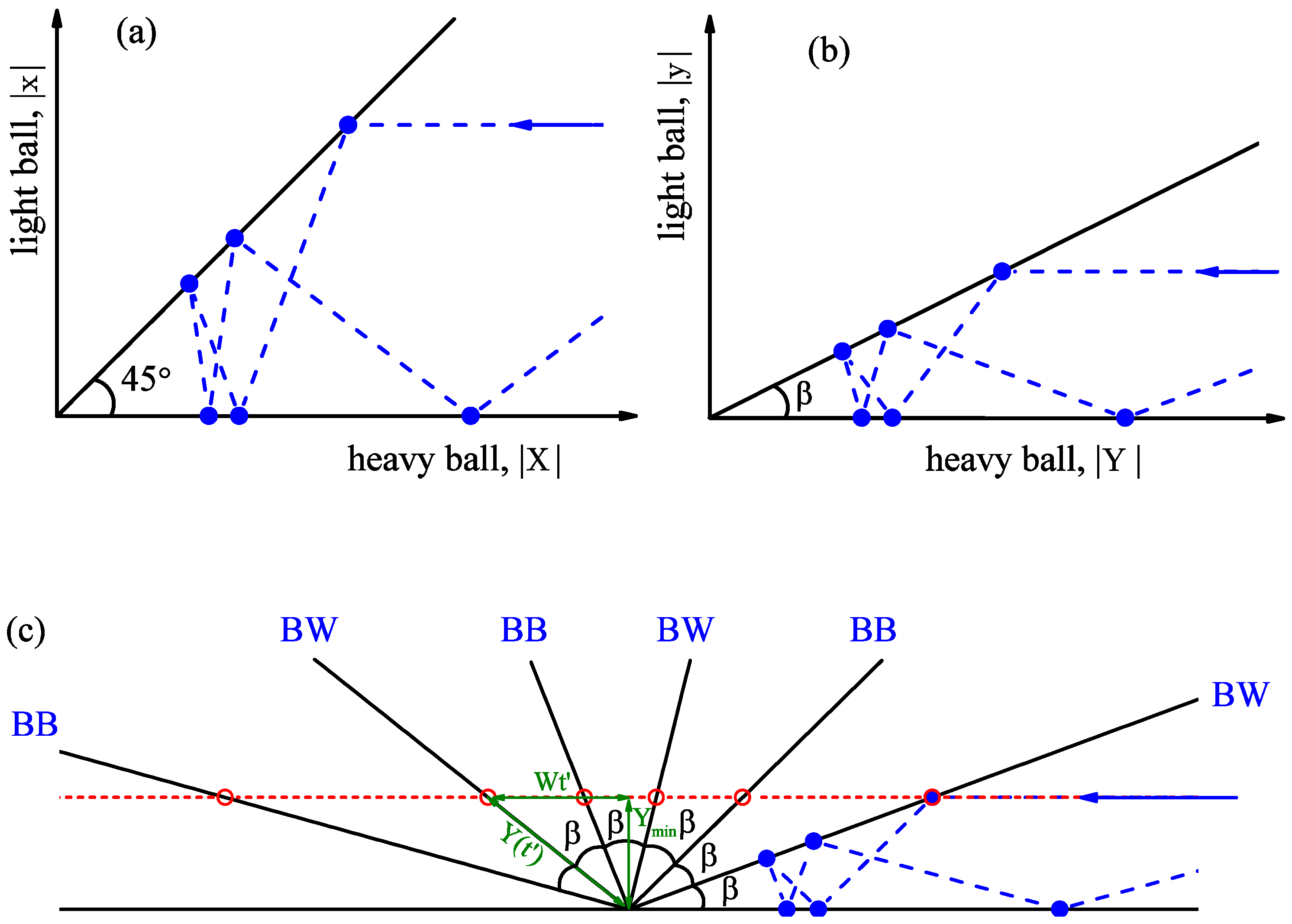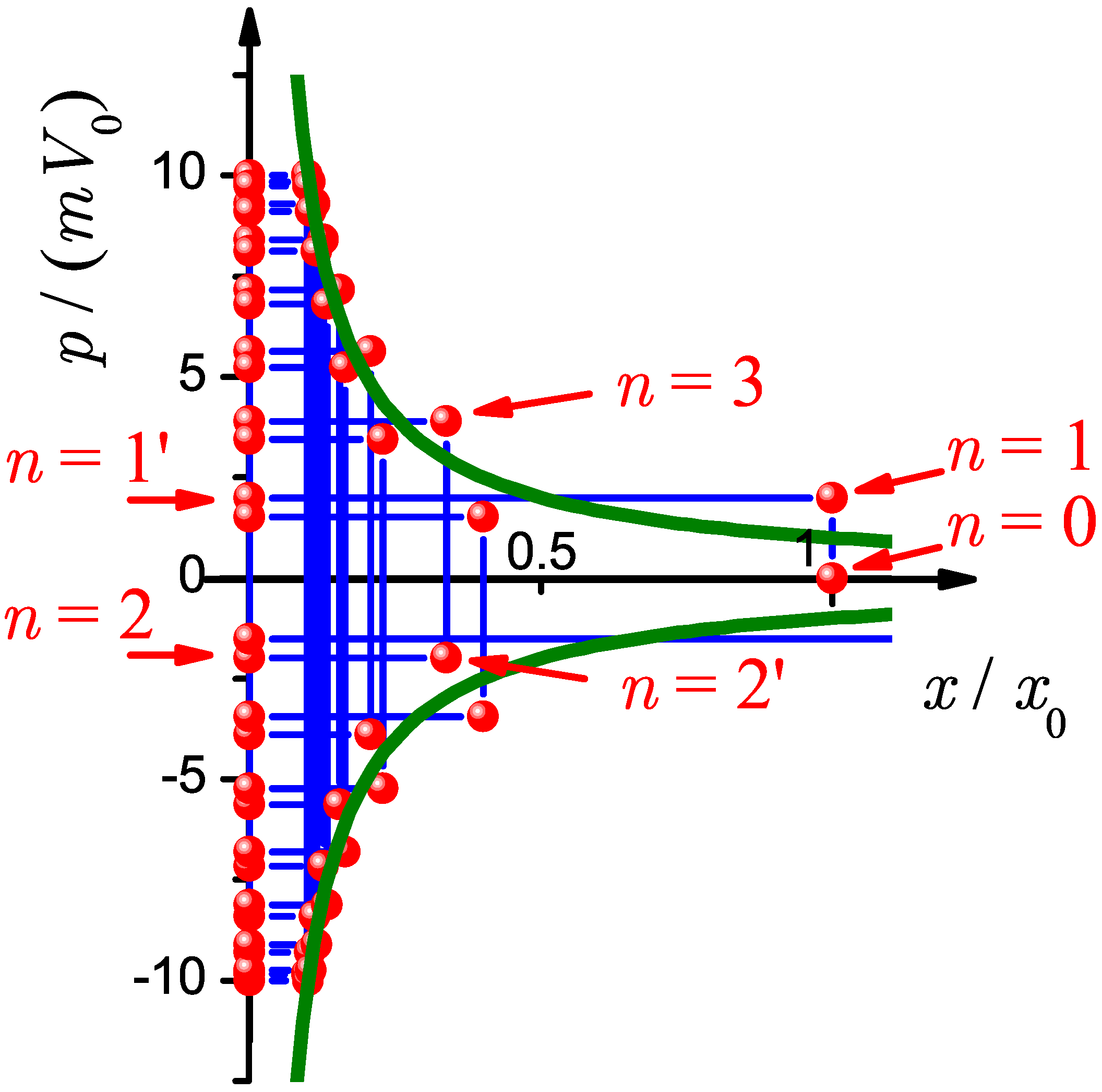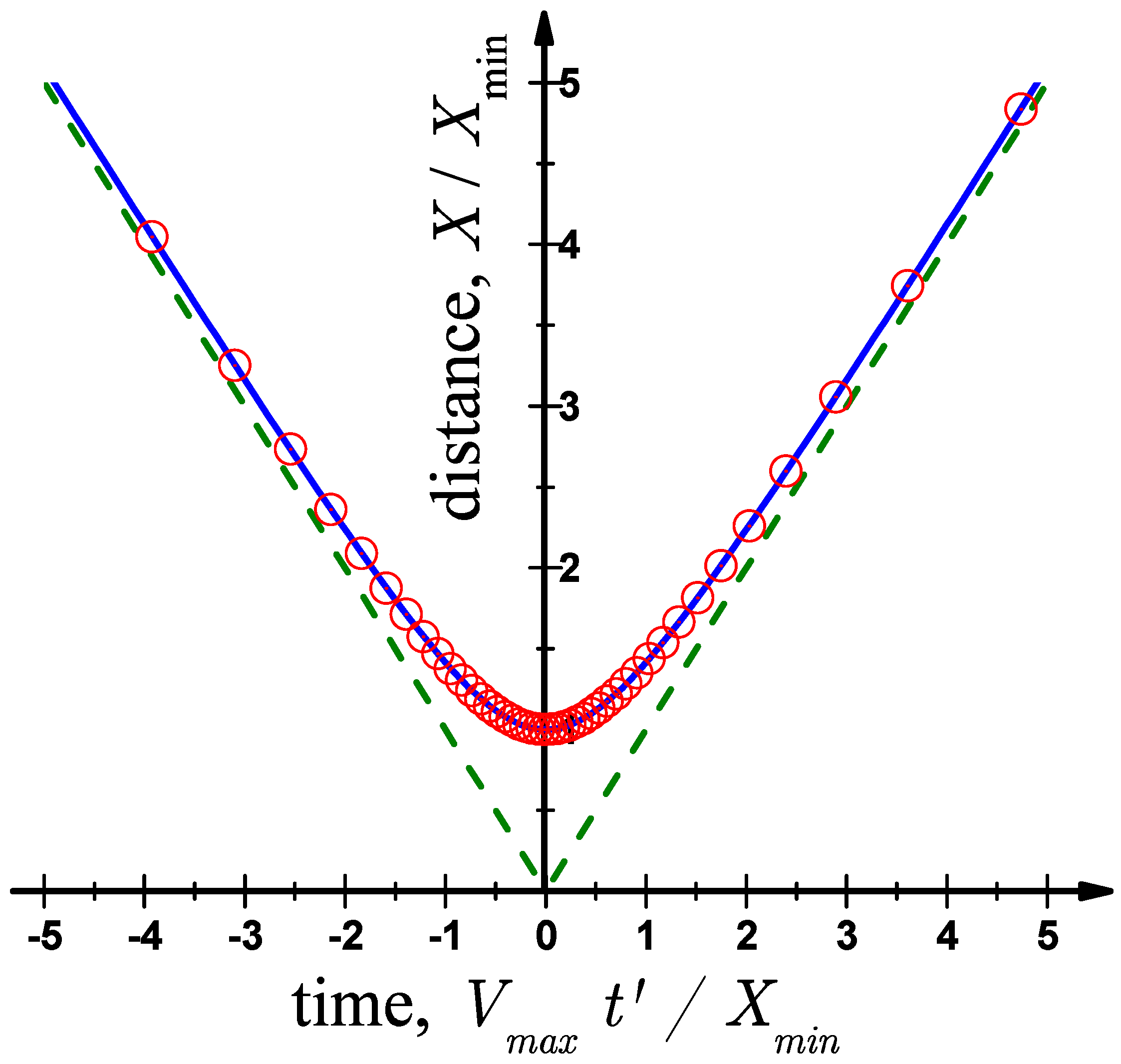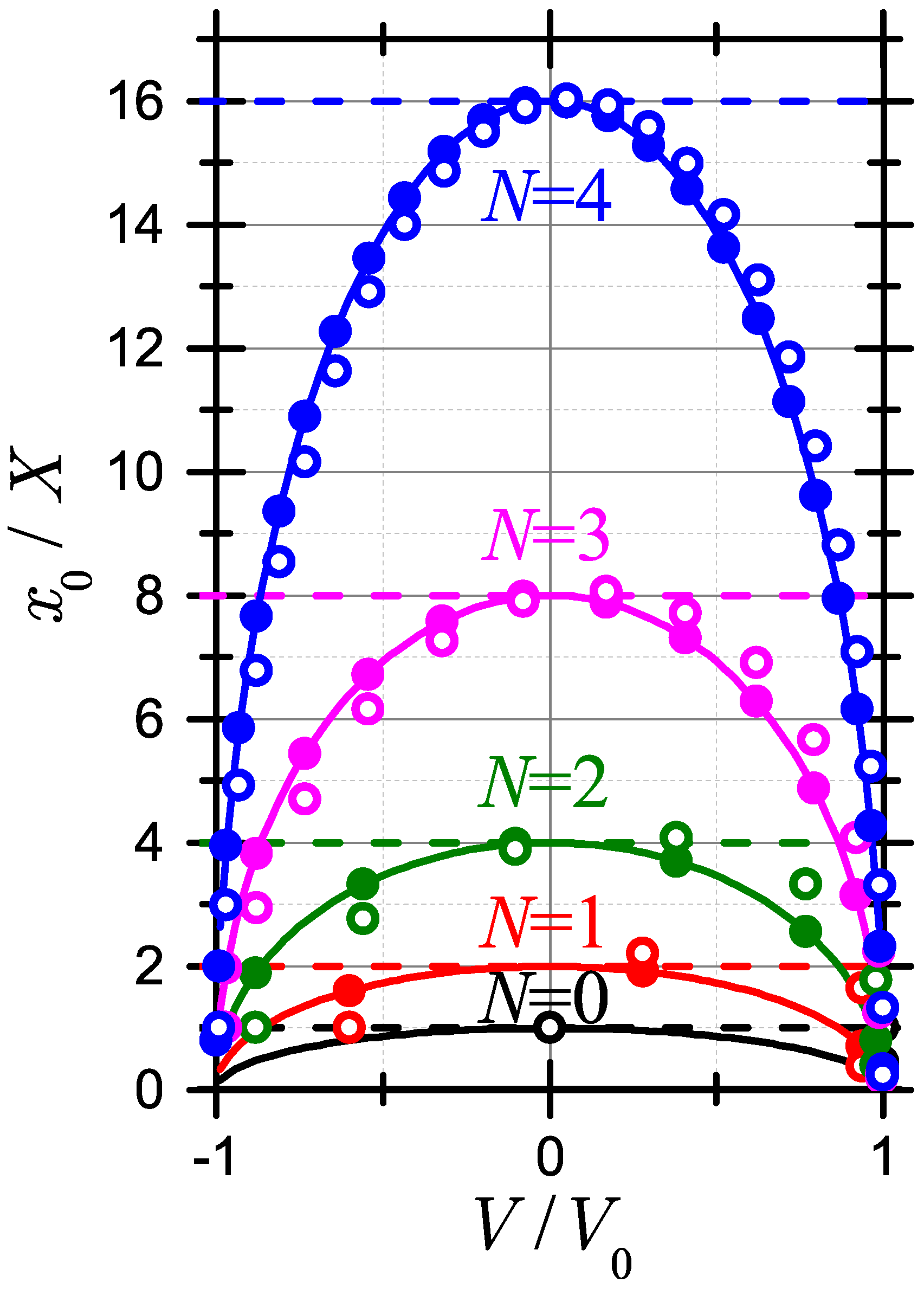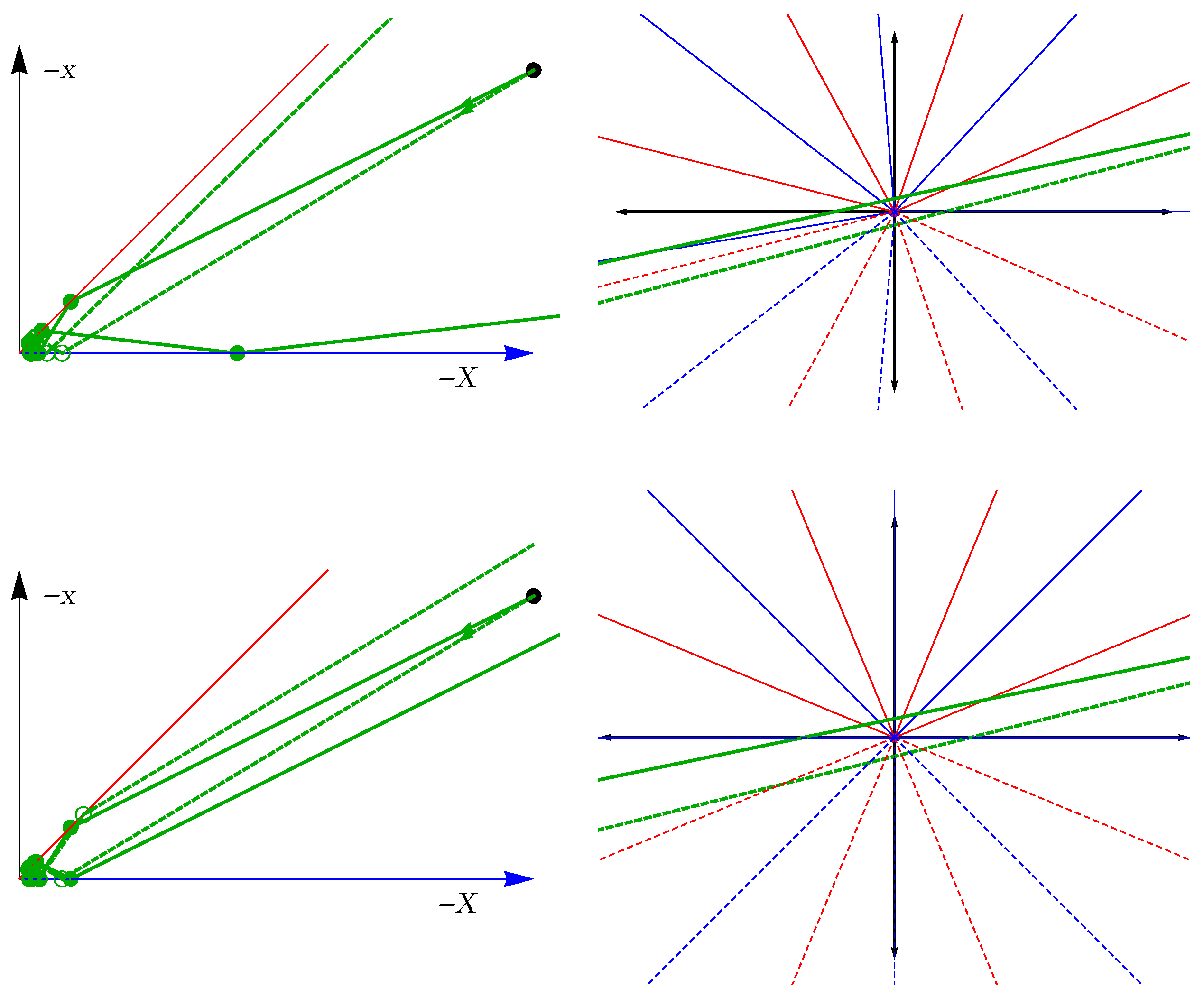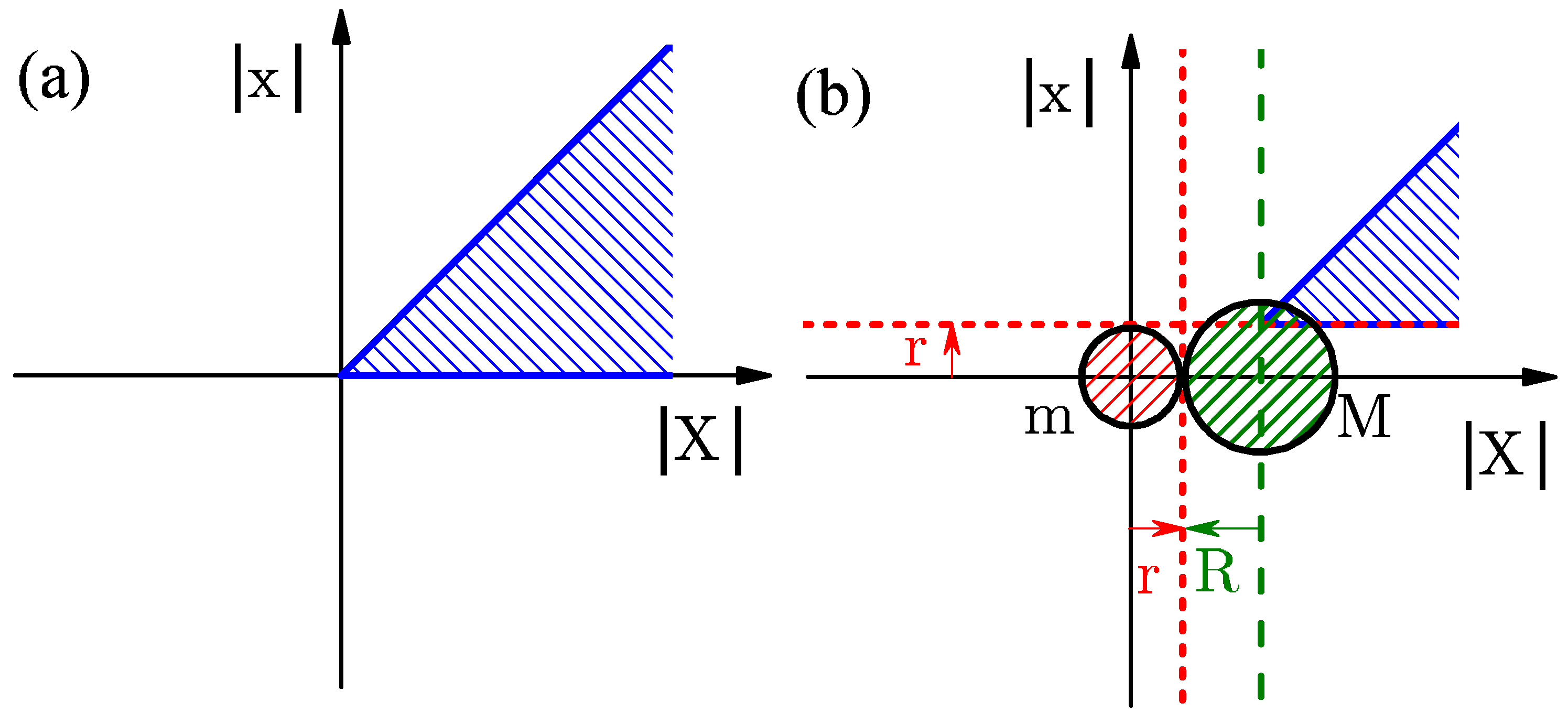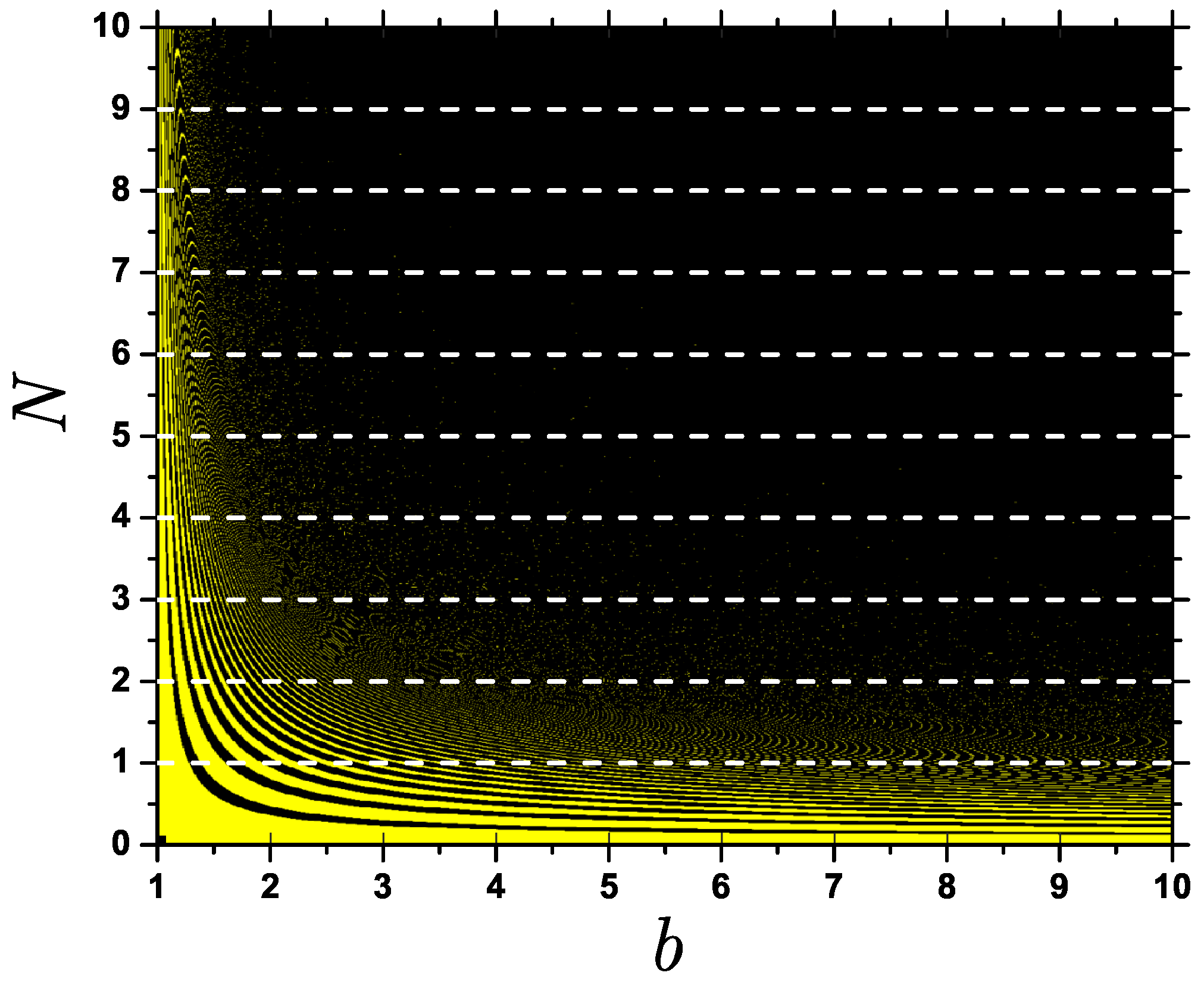1. Introduction
In the history of science, the invention of numbers stands out as an influential discovery essential for the foundation and development of mathematics and every quantitative science that followed. In many ancient cultures, the symbols for the first digits correspond to a graphical representation of counting. In Babylonian, Roman and Japanese numerals, digit “1” contains one counting object, digit “2” two objects, digit “3” three objects, see
Figure 1. However, as a technology for representing numbers, the unary base clearly has unfavorable scaling properties. A numeral system, where the position of a digit defines its value with respect to a base that is larger than one, achieves exponential compression at the cost of introducing new symbolic digits. Throughout history different bases have been used, including the modern decimal system and the sexagesimal one introduced in Babylon around the second millennium BC. Its legacy can still be found in modern units of time, with 60 s in one minute and 60 min in one hour.
In a numeral system the digits that represent a rational number eventually repeat, but for irrational numbers like
the infinite non-repeating sequence of numbers can be difficult to calculate precisely. Already in the antiquity there was a practical interest in representing numbers like
and
explicitly [
1,
2,
3]. In a Babylonian clay tablet from second millennium BC, the first four digits of
are explicitly given in sexagesimal system as
. In a decimal system the error appears in the eighth digit as can be appreciated by comparing
with the proper value
. The first digit of the number
, which naturally appears when calculating the ratio between a circumference of a circle and its diameter [
4], is calculated in the Old Testament [1 Kings 7:23] as 3. While in many practical situations, it is sufficient to use an approximate value, it was of fundamental interest to find a method of finding the next digits. Some other ancient estimations come from an Egyptian papyrus which implies
and a Babylonian clay tablet leading to the value
. Archimedes calculated the upper bound as
.
The fascination with the number
makes scientists compete for the largest number of digits calculated. Simon Newcomb (1835–1909) is quoted for having said “
Ten decimal places [of π] are sufficient to give the circumference of the earth to a fraction of an inch, and thirty decimals would give the circumference of the visible universe to a quantity imperceptible to the most powerful microscope” [
5]. The current world record [
6] consists in calculating first 22,459,157,718,361 (
trillion) digits. Such a task manifestly goes beyond any practical purpose but can be justified by the universal attraction of the number
itself. The distribution of digits is flat in different bases [
6] and it was tested that the sequence of
digits makes a good random number generator which can be used for practical scientific and engineering computations [
7]. An alternative popular idea is that, in contrast, special information might be coded in the digits of
[
8], or even God’s name as in the plot of “Pi” film from 1990. Recently, analogies between anomalies in the cosmic microwave background and patterns in the digits of
were pointed out in “Pi in the Sky” article [
9], which appeared on the 1st of April.
While the number elegantly arises in a large variety of trigonometric relations, integrals, series, products, continued fractions, far fewer experimental methods are known of how to obtain its digits by performing measurements according to some procedure. A stochastic method, stemming from Comte de Buffon dates back to the eighteenth century and consists in dropping N needles of length l on parallel lines separated by length L and experimentally determining the number of times that those needles were crossing the lines. The number can be then approximated by with the error in its estimation proportional to . It means that in order to get the first D digits right, one has to perform more than trials. This makes it extremely difficult to obtain the precise value in a real-world experiment although an equivalent computer experiment can be easily performed with modern computational power.
A completely new perspective has emerged when G.A. Galperin formulated a deterministic method based on a two-ball billiard [
10]. The scheme of the method is summarized in
Figure 2. Two balls, heavy and light, move along a groove which ends with a wall. The heavy ball collides with the stationary light ball and the number of collisions
is counted for a different mass ratio of the heavy to light ball. It was shown by Galperin that the number of collisions is intimately related to the number
, providing the first digits of the irrational number. Thus, for equal masses,
, the number of collisions is
, which corresponds to the first digit of number
. For masses
the number of collisions is
, giving the first two digits. The case of
results in
thus providing three digits and so on. To a certain extent, finding digits of number
became conceptually as simple and elegant as enumerating the counting objects like Roman or Japanese digits shown in
Figure 1.
The history of this elegant method begins with the problem posed by Sinai [
11] of the ergodic motion of two balls within two walls. He showed that the configuration space of the system is limited to a triangle and, thus the problem is equivalent to a billiard with the same opening angle. Furthermore, Sinai used “billiard variables” such that the absolute value of the rescaled velocity is conserved and the product of the vector of the rescaled velocities with the vector
is constant. The number of collisions in a “gas of two molecules” was given in the book by Galperin and Zemlyakov [
12] in 1990, although no relation to the digits of
was given at that moment. Similarly, Tabachnikov in his 1995 book [
13] argued that the number of collisions is always finite and provided the same expression for it. The way to extract digits of
from the billiard was explained in Galperin’s seminars in the 1990s. In 2001 Galperin published a short article on that procedure in Russian [
10] and in 2003 in English [
14]. This fascinating problem was given as a motivating example in the introduction of another book by Tabachnikov, Ref. [
15], illustrating trajectory unfolding. Gorelyshev in Ref. [
16] applied adiabatic approximation to the two-ball problem and found a conserved quantity, namely the action, close to the point of return. Weidman [
17] found two invariants of motion, corresponding to ball–ball and ball–wall collisions and he noted that the terminal collision distinguishes between even and odd digits. Davis in Ref. [
18] solved the equations of motion as a system of two linear equations for ball–ball and ball–wall collisions, finding the rotation angle from determinantal equation. In addition to the energetic circle [
10], defining the velocities, he expressed the balls positions as a function of the number of collisions. Related systems studied by similar methods include two balls in one dimension with gravity [
19], dynamics of polygonal billiards [
20] and a ping-pong ball between two cannonballs [
21].
In the present work, we review how Galperin billiards with mass ratio generate the first N digits of the fractional part (i.e., digits beyond the radix point) of number in base-b numeral system. Because Galperin billiards turn the calculation of the digits of an irrational number into a physical process, this motivates deeper inquiry both into the dynamics of this few-body system and into the systematic errors inherent in the analog calculation process. We consider the cases of integer and non-integer base systems, including a compelling case of representing number in a system base of .
The main new results of the present paper include the following. We provide a complete explicit solution for the balls’ positions, velocities and collision moment as a function of the collision number. We find new invariants of motion and show that for general values of the parameters the system is integrable and for some special values of the parameters it is superintegrable and maximally superintegrable. Finally, we demonstrate that this billiard can be mapped onto a two-particle Calogero-type model.
The article is organized as follows. In
Section 2, we review previous results on Galperin billiards. In particular, we explain how billiard coordinates and the unfolding process simplify the analysis of the trajectories in configuration space. We also review prior results from Gorelyshev [
16] and Weidman [
17] that provide the hints of another dynamical invariant. In
Section 3, this invariant is revealed to be a new integral of motion, a kind of pseudo-angular momentum in billiard coordinates. We apply this invariant to generate new analytic results for the equations of motion and to make useful approximations when the mass ratio is large. Using this invariant, we also show that the portrait of the system is close to a circle in velocity-velocity and velocity-inverse position coordinates and to a hyperbola in position-time variables. For certain mass ratios a third integral of motion also exists, making those particular cases of Galperin billiards superintegrable. In
Section 4 we discuss different physical systems that can realized Galperin billiards, including finite-size balls, a four-body realization, and we make the connection to Calogero-type models. In
Section 5 we introduce the concept of systematic error and analyze the possible differences between digits generated by the Galperin billiard method and the usual methods of expressing the number
in an arbitrary base. The following
Section 6 and
Section 7 provide examples of how
is calculated in systems with integer and non-integer bases, respectively including the intriguing case of expressing
in the base
, the generated expression is different from a finite number,
, and instead is given by an infinite representation,
. The difference between finite and infinite representation is similar to that of
in the decimal system. Furthermore, we note that the finite representation is not unique in the base of the golden number. The conclusion provides a few remarks on how this work can be extended, including to quantum systems where intriguing connections between Galperin billiards and quantum search algorithms have been proposed [
22].
2. Galperin Billiard Method
In this Section, we summarize known results about the Galperin billiard model and review how it can be used to calculate the digits of . The idealized billiard system consists of two ‘balls’ (really, structureless particles) with different masses moving in one dimension and bounded by a hard wall. The initial conditions presuppose that the heavier ball is coming in from infinity and the lighter particle is interposed between the heavy ball and the wall. The ball–ball collisions are perfectly elastic and so are the ball–wall collisions.
Denote the mass and position of the heavier particle by M and X and of the light particle by m and x. (As a general rule, we assign capital letters to the variables of the heavy ball and lower-case letters to those of the light ball.) We choose the coordinate system such that the wall is at the origin and therefore the positions of the heavy and the light balls satisfy at every moment of time. The heavy ball moves toward the stationary light ball with some initial velocity and the light ball begins at rest at the initial position . The precise values of and are irrelevant for the total number of collisions, but the position defines the length scale for the system and sets the time scale.
Somewhat like a force carrier, the light ball shuttles back and forth between the heavy ball and the wall, effectively mediating a repulsive interaction that eventually reverses the approach of the heavy ball. Collisions continue until either:
The last ball–ball collision results in both balls receding from the wall and the heavier ball moving faster. In this case, there are an odd number of collisions.
After the last ball–ball collision the heavy ball recedes from the wall with a speed too great for the light ball to catch it again upon one more reflection from the wall. There are an even number of collisions in this case.
Either way, we denote the total number of ball–ball and ball–wall collisions by
and we seek to calculate this number as a function of the mass ratio. We parameterize the mass ratio as
with parameter
b (integer or not) referred to as the
base and non-negative integer
N referred to as the
mantissa. Using this parameterization for the total number of collisions
, the integer
N determines the number of obtained digits of
calculated in the base
b.
2.1. Billiard Coordinates and the Number of Collisions
The number of collisions
can be derived most easily by transforming into
billiard coordinates [
11,
12]. In billiard velocity coordinates the conservation laws implied by the elastic ball–ball and ball–wall collisions take on a simple geometric form [
10,
14,
17,
18].
The conservation of kinetic energy
defines an ellipse in velocity space; see
Figure 3. This motivates the change into mass-scaled billiard variables:
Note that unlike Sinai or Galperin, we normalize the billiard coordinates by the square root of the total mass so they continue to have units of position. The transformation is described by the angle
The billiard velocities (or configuration speed in Ref. [
12]) are defined as time derivative of the position (
3) and are also scaled with the masses of the balls
The energy conservation law (
2) expressed in billiard velocities (
5) reads as
The allowed values of
W and
w forming a circle in billiard velocity space with radius
; see
Figure 4. Note that Equation (
6) looks like the kinetic energy of a particle in two dimensions with total mass
. Defining the vector of billiard velocities
, the conservation of kinetic energy implies that neither ball–ball nor ball–wall collisions change the magnitude of
. Instead, both types of collisions only change the angle
between
and the horizontal axis, as will be explained in more details below.
Ball–ball collisions act like reflections on
in billiard velocity space. To show this, first note that in ball–ball elastic collisions, momentum conservation
combined with energy conservation implies that the relative speed
u is also a conserved quantity
This can be verified by multiplying Equation (
7) by
and subtracting Equation (
2). In billiard velocity space, conserved quantities
p and
u define an orthogonal coordinate system with unit vectors
The coordinate system defined by
and
is rotated by an angle
from the
coordinates. In a ball–ball collision, momentum conservation implies the projection
of the billiard velocity on the momentum axis is invariant and the projection
on the relative velocity axis is reversed in sign. In other words, each ball–ball collision acts on
like a reflection across a line making an angle
with the
W-axis. This can be represented as a matrix acting in billiard velocity space
or equivalently each ball–ball collision maps
to
.
Ball–wall collisions are also reflections in billiard velocity space, reversing
v (and therefore
w) while leaving
V and
W unchanged. Ball–wall collisions are represented as the matrix that preserves the horizontal component of
and reflects the vertical
This corresponds to the transformation
to
. The product
of the two reflections is a rotation, and so the new velocities after a combined round of ball–ball and ball–wall collisions are represented in billiard velocity space by a rotation by the angle
[
18], as depicted in
Figure 4.
Using the transformation rules describing ball–ball and ball–wall collisions, it is straightforward to obtain the angle
describing the velocities after
n collisions. Typical changes of the vector
are depicted in
Figure 4 and can be summarized as follows:
: Before any collision has happened, the light particle is at rest, , as shown by the horizontal vector with
: The first ball–ball collision reflects the vector across the line , resulting in with
: The first ball–wall collision reflects the vector vertically, resulting in with
: The second ball–ball collision reflects the vector across the line again, resulting in with
: The second ball–wall collision reflects the vector vertically again, resulting in with
Generalizing, when n is odd, the n-th collision is a ball–ball collision after which . When n is even, the n-th collision is a ball–wall collision after which .
Working backward from the
, one can integrate the equations of motion to find the times
of the collisions and positions
and
of the balls during the collisions, as for example in [
17]. See the
Appendix A for more details. The last collision defines if the number of collisions is an odd or an even number. Depending on its value, the corresponding digit of
is either odd or even. Physically, its parity depends on whether the last collision was a ball–wall collision with no more ball–ball impacts or if it was a ball–ball collision. In Ref. [
18] it is shown that an even number of collisions occurs,
, when
. In
Figure 5 we display a typical example of heavy and light ball trajectories,
and
, for
and different
N.
During each ball–ball collision, the velocity V of the heavy ball is changed by a negative amount, eventually stopping and reversing the heavy ball. After the angle has crossed position, the velocity of the heavy mass becomes negative (the ball is moving away from the wall) and its absolute value is increased with each consecutive collision. Collisions continue until and the lighter ball is at rest or moving away from the wall slower than the heavy ball. After that, the iterations end; continuing further would result in a decrease of the velocity of the heavy mass, which is physically impossible.
Therefore the ratio of
divided by the rotation angle
gives the total number of collisions
where
means the integer part of
z. The number of collisions (
12) can be explicitly evaluated as a function of parameters
b and
N as
Moreover, for large base
b and large mantissa
N the argument of the inverse tangent function is small,
, and the inverse tangent function can expanded as
, resulting in Galperin’s elegant expression
This equation provides an expression for the number in systems with integer and non-integer bases b.
2.2. Unfolding the Trajectory
The trajectory of the balls in configuration space can be given a simple geometrical interpretation which clarifies how the number of collisions is related to the opening angle [
14,
15] and reveals another invariant of the motion.
The original particle coordinates are restricted to the region
, where boundary
corresponds to the light ball hitting the wall and
the ball–ball collision, see
Figure 6a. The opening angle for this wedge in
configuration space is
. When the trajectory meets the line
, corresponding to ball–wall collision, the reflection obeys the law of optics: the tangent component of velocity corresponding to
V is preserved and the normal component
v is reversed. However, the reflections from the line
do not obey the laws of optics, as the incident angle differs from the angle of reflection.
This is rectified by transforming to billiard coordinates
Y and
y. Now the opening angle in is equal to
, see
Figure 6b and we recover the law of optics for reflections from the line
without disrupting the reflections at
. This is because the tangent direction to the line
is the unit vector
and the corresponding component of the billiard velocity vector
is proportional to the total momentum and is conserved during ball–ball collisions. Similarly, the normal direction is aligned with the unit vector
and the sign of the normal component is the relative velocity
which is reversed during the collisions.
In this way the original two-body problem is mapped to a problem of a single ball moving in a wedge with opening angle
with specular reflections from the mirrors. When the ricocheting trajectory in the wedge is unfolded, it results in a straight line. In
Figure 6 we show a typical example. It provides a simple geometrical interpretation for the number of collisions as the number of times the opening angle can fit into the maximal angle of 180 degrees or
radians.
The figure of the unfolded trajectory looks like a free particle moving in a straight line, and this is supported by the form of the kinetic energy Equation (
6). This suggests an angular momentum-like quantity
should be conserved, at least in magnitude. This indeed is the case, and this invariant
is the key to the new results presented in
Section 3. First, however we present two previous results from Refs. [
16,
17] that anticipated this invariant and provide physical context.
2.3. Adiabatic Approximation and Action Invariants
From the point of view of Hamiltonian systems, the problem of two balls has two degrees of freedom, namely two positions X, x while momenta and are conjugate variables. When the heavy ball approaches the point of return near , it slows down while the light ball wildly oscillates between the heavy ball and the wall. The heavier the ball, the smaller its minimal distance from the wall, , and the larger is the maximal velocity of the light ball, .
This separates the scales into
fast and
slow variables so that during a single oscillation of a light ball, the position of the heavy ball is only slightly changed. It was argued by Kapitza [
23,
24] in his work on driven pendulum (Kapitza pendulum) that by averaging over the fast variables it might be possible to simplify the problem and provide a solution if the separation of scales is large enough. In our case, the parameter which defines the separation of scales is the mass ratio
, so for any base
b by increasing
N the needed condition
is well satisfied. The systems with different scales can be studied in the theory of adiabatic invariants [
25].
It is useful to analyze the
portrait of the system, corresponding to the fast variables. A typical example is shown in
Figure 7. After the ball–ball collision, (for example,
), the light ball moves with a constant momentum
p until it hits the wall. This results in a horizontal line with some momentum
p and
. During the ball–wall (
) collision the momentum of the light mass is inverted, resulting in a vertical line
,
. After that the light ball travels with constant momentum until it hits the heavy ball (
), corresponding to a horizontal line at
from
. At the next ball–ball collision, the velocity of the light particle inverts the sign but its absolute value is slightly changed due to a small but finite momentum transfer from the heavy ball. During a single cycle (or “period”) consisting of four collisions the light ball draws an almost closed rectangle. The larger is the mass
M of the heavy ball and the smaller is its velocity
V, the more similar is the trajectory during a cycle to a closed rectangle.
The area covered by the light particle during a cycle is called
action I, defined as
where
p is the momentum of the light particle and
X is its maximal distance from the wall (defined by the position of the heavy particle) during a single cycle. The action (
15) is an adiabatic invariant and is not changed in the vicinity of the return point. Indeed, it might be observed in
Figure 7 that while action (
15) is a good adiabatic invariant close to the return point (shown with thick green line), the first few collisions (
) are quite off.
It is shown in Ref. [
16] that for times of the order
, action (
15) is conserved with accuracy
, where
is treated as a small parameter. In the same limit the Hamiltonian can be written as
It is possible to find two invariants (for BB and BW collisions), which coincide close to the point of return with adiabatic invariant (action) given by Equation (
15) [
17]. It can be straightforwardly verified from (
A3)–(
A4) that the the following quantities remain constant
for a cycle that starts and ends with a ball–wall collision, and
during a cycle between ball–ball collisions. Importantly, these invariants are
always conserved on the corresponding BW and BB cycles and not only close to the point of return.
The ball–wall invariant (
17) reduces to an elegant expression,
, and thus
I, entering into Equations (
17) and (
18), can be expressed in terms of the initial conditions as
agreeing with (
15) above. Furthermore, from the BW invariant we can get the expression for the closest position
of the heavy ball to the wall which is reached at the collision when the heavy ball inverts its velocity and the light ball achieves its maximal velocity:
For the ratio of the velocities we have used the energy conservation law (
2), since
is reached when
, and
is reached for
, c.f
Figure 3.
Defining
as the phase angle conjugate to
I, the time derivative of the phase is obtained from Hamiltonian (
16) as
. The integration over the time gives the final phase after all collisions have happened as
[
16]. During each cycle there are two collisions (BB and BW) and the phase changes by
, so the total number of collisions
can be infer as
, resulting in
where
. This formula should be compared with Equation (
12) and, indeed, correctly relates total number of collisions
with
. At the same time it is not
a priori obvious that the adiabatic approximation should be precise far from the return point, that is for times
, especially at the time of the final collision. The BB and BW invariants (
17)–(
18) coincide with adiabatic invariant (action) given by Equation (
15) close to the point of return, and, in particular, this clarifies why the adiabatic approximation leads to the correct number of collisions even if the region of applicability of the approximation is violated.
Finally we note that the time dependence of the phase
is related to the time dependence of the collision number
according to
. In the continuous limit of many collisions, the phase increases as an inverse tangent function, as shown in Equation (
36) of
Section 3.1 below.
3. Integrability and Its Consequences
We show now that the Galperin billiard system is Liouville integrable, i.e., it possesses as many exact constants (first integrals) of motion in involution as it has degrees of freedom. Since this system has only two degrees of freedom, this requires the existence of only one constant of motion in addition to the total energy. Generally, a notion of involution between two observables—vanishing of the Poisson bracket between them—requires a Hamiltonian reformulation of the laws of dynamics of the system. However, for the two-dimensional systems, the only zero Poisson bracket required is the one between the additional conserved quantity and the Hamiltonian; the latter is simply automatic.
To identify this additional conserved quantity, let us consider the system in the billiard coordinates (
3). It is represented by a two-dimensional particle with mass
moving a wedge of an opening
as shown in
Figure 6. In between the collisions, the angular momentum,
, is conserved. Upon a ball–wall or a ball–ball collision, the angular momentum changes sign. However, its square,
remains invariant throughout the evolution.
This can be checked by explicit calculations using the results of
Appendix A. At the instances of a ball–wall collision, where
, the invariant (
21) is proportional to the square of the invariant (
17) identified by Weidman [
17]:
Likewise, on a ball–ball collision, the angular momentum square assumes a value proportional to the corresponding invariant (
18):
with the same coefficient of proportionality. Evaluating this constant on the initial conditions, the invariant takes the value
To express the Hamiltonian in terms of this invariant, we start from the unfolded billiard coordinates. The Hamiltonian has the form of a free particle in two dimensions with mass
(c.f. Equation (
6))
where the momenta conjugate to the unfolded billiard coordinates
are
and
. Changing to polar coordinates
the Hamiltonian take the form
In this form, the Hamiltonian (
27) looks like a two-body Calogero-Sutherland model as will be explained in more details in
Section 4.4.
3.1. Exact Solution
In the
Appendix A, the sequence of positions and times of collisions was found by step-wise integration of the kinematics. However, the integrability of the Galperin model and the geometry of the unfolded trajectory allows for explicit solution where the velocities and positions can be explicitly expressed as a function of the collision number.
As shown in
Figure 8, the trajectory in unfolded coordinates is a horizontal line that traverses at constant speed
. The
n-th collision occurs at the intersection of the trajectory and a line making an angle
, where odd
n are ball–ball collisions and even
n are ball–wall. These intersections occur at a distance
from the origin of the unfolded coordinates, with the first ball–ball collision occurring at
. Using the law of sines, the general formula for the ‘collision radius’
is
For ball–ball collisions
with
, we project the collision with radius
and angle
onto the previous ball–wall axis at
and use (
3) to find
For ball–wall collisions
with
, the little ball is at the wall
and the large ball is at
Following similar geometrical logic, the time interval
from the first collision to the
n-th collision can be found by considering the length of trajectory
between those collisions
and then dividing by the trajectory velocity in billiard coordinates
to find
where
is the characteristic time of the system. From this the time interval
between the
-th collision and the
n-th collision is calculated to be
In the continuous limit of many collisions,
, the following simple expression for the inverse of time
between consecutive collisions,
where
. In the same limit, we find the following approximate relations between time and collision number
The total time interval from first collision to final collision is
This curious expression for is bounded by below by , i.e., the time that the large ball would have taken to transit from to the wall and back to if the small ball had not been there at all. This lower bound is saturated in the limit from above when and q is an integer; the limit taken from below diverges to . This divergence occurs in the last time step , as one sees from the expression for which is bounded from above by . Further note that when and q is an integer, the velocity of the large ball is exactly reversed. Both of these effects for provide a clue that the system is superintegrable for certain mass ratios, as we show below.
For completeness, we note that the velocities immediately after each collision can be found from the results of
Section 2 and are tidily expressed as
3.2. Position as a Function of Time: Hyperbolic Shape
Here we will demonstrate that a hyperbolic curve describes the positions of the light ball at BB collisions and of the heavy ball both at BB and BW collisions.
In the description of a billiard in a wedge, the trajectory is bounded to the phase space
, as shown in
Figure 6. The collisions happen when either
, i.e., when the light particle hits the wall (BW collision) or when
and the light particle hits the heavy one (BB collision). The unfolded trajectory is formed by reflecting the wedge, so that its angle
is preserved. The collisions in the unfolded trajectory occur when the straight line intersects one of the mirrors, corresponding to an angle
with
n being the number of the collision. For any intersection its distance from the origin is the same in unfolded picture and that of the billiard in a wedge. In particular, for a ball–ball collision, this distance is equal to
. Instead, in the moment of a ball–wall collision, the light ball has coordinate
and this distance is equal to the position of the heavy ball
. In the unfolded coordinates depicted in
Figure 6, the minimal possible distance
of the heavy ball from the wall is located on the vertical line directly above the origin and corresponds to the point of return in the limit
. The projection to the horizontal axis is given by
, where
is the time counted from the point of return and
W is the constant velocity, equal to the initial velocity of the heavy ball
. Catheti
,
and hypotenuse
forming a right-angled triangle are related as
. The same expression written in terms of the original coordinate
and velocity
V leads to the hyperbolic relation
exactly satisfied for any ball–wall collision. Here
is given by Equation (
20).
Instead, for a ball–ball collision both coordinates of the heavy and light particles are equal,
, and lie on a hyperbola of a slightly smaller semi-axis
In the limit of large mass, Equations (
42) and (
43) coincide.
We compare predictions of Equation (
43) with the exact results in
Figure 9. The minimal possible distance
is actually reached only if there is a crossing of the unfolded trajectory at the vertical line above the origin (see
Figure 6), otherwise the actual minimal distance is larger. In the limit of an infinitely heavy ball (
and
), the trajectory again becomes non-analytic with a kink in the point where the heavy ball hits the wall,
shown in
Figure 9 with two straight lines.
3.3. Circle in Variables
Within the adiabatic approximation, introduced in
Section 2.3, from the Hamiltonian (
16) it can be seen that the
portrait has a semicircular shape with the coefficient of proportionality linear in the action
I [
16]. In
Section 2.3 it was verified that some of the predictions of the adiabatic theory actually remain exact even far from the point of return, effectively expanding the limits of its applicability. In particular, the action
I is conserved for any ball–wall collision throughout the whole process, and its value can be expressed in terms of the initial position of the light ball
and the initial velocity of the heavy ball
according to Equation (
19). This suggests that the portraits in (
P,
) and (
V,
) coordinates are close to ellipses.
A straightforward way to see it is to use the Hamiltonian (
16) obtained within the adiabatic approximation,
where we extended its validity to any BW collision, in particular to collisions happening far from the point of return,
. Equation (
45) can be recast in the form of an ellipse for
coordinates as
Figure 10 shows an example of the trajectory in
coordinates. The first collision happens at
and
corresponding to the initial velocity and the initial (large) distance from the wall. As the collisions go on, the heavy ball comes closer to the wall until it inverts its velocity at the point
, which corresponds to the point of return. At this moment the heavy ball is located at the closest distance to the wall. It might be appreciated that Equation (
20) describing this distance is quite precise from the practical point of view. The case illustrated in
Figure 10 corresponds to the binary base,
, and for mantissa length
the heavy ball is expected to come closer to the wall by a factor of
compared to the initial position of the light ball. Once the point of return is passed, the heavy ball has a negative velocity which increases in absolute value up to
, while the ball moves far away from the ball
.
Overall, the shapes obtained are quite similar to ellipses predicted by Equation (
46). The “discretization” becomes smaller as
N is increased. The pairs with same velocity
V but different values of
X correspond to light ball–wall collisions (velocity of the heavy ball is not changed) and ball–ball collisions, shown in
Figure 10 with closed and open symbols. The points which correspond to the ball–wall collisions lie exactly on the top of the ellipse due to presence of ball–wall invariant (
17). Instead, for ball–ball collisions there is some shift, with a different sign for the heavy ball moving towards the wall or away from it. This effect originates from an additional contribution containing the velocity of the heavy ball in the ball–ball invariant (
18). At the point of return this correction vanishes and the adiabatic theory becomes fully applicable.
3.4. Superintegrability and Maximal Superintegrability
When a system with d degrees of freedom has more than d constants of the motion, it is called superintegrable. The maximum allowed number of functionally-independent conserved quantities is , one less than the dimension of the phase space. Such a system is called maximally superintegrable. For certain mass ratios, the Galperin model has a third functionally-independent integral of motion. Since the Galperin model has two degrees of freedom, and it is therefore superintegrable and also maximally superintegrable.
For a system with bounded orbits, the superintegrability manifests itself as a reduction of the dimensionality of the phase space available from a given initial condition. Maximal superintegrability results in closed one-dimensional orbits. For unbounded orbits like the Galperin model, the manifestation of the maximal superintegrability is more subtle, but still—as shown below—tangible.
For certain mass ratios
the wedge in the billiard coordinates
depicted in
Figure 6b acquires an opening of
with
being an integer. For these rational angles, a third functionally-independent constant of the motion appears. In this case, sequences of reflections about the cavity walls form a finite group with order
known as the reflection group
or the dihedral group
. The generators for the group are the reflections in billiard velocity space
and
defined in
Section 2.1 supplemented with the group-defining relation
.
As it has been shown in Ref. [
26], this discrete reflection group symmetry implies that a new constant of motion can be constructed: it is represented by the first nontrivial invariant (or Chevalley) polynomial of the group [
27,
28], evaluated on the momentum vector. The constant of motion
J produced by this construction in our case is as follows:
Some notable examples include
Observe that in these examples and in general, even (odd) q, produces a constant of motion J, which is an even (odd) function with respect to the inversion. This difference between the even and odd cases, will lead to a difference between the maximal superintegrability manifestations between these two cases.
To discuss the consequences of the maximal superintegrability, we must enlarge the set of the initial conditions considered, allowing for a nonzero initial velocity of the light particle. Only then does the functional-independence of the new third invariant become manifest. Generally, the allowed sets of incident (in) velocities, i.e., the states where no collisions occurred in the past, would require positive initial velocities ordered according to
Likewise, an outgoing state (out), i.e., a state that does not lead to any collisions in the future, is characterized by negative final velocities ordered according to
It can be shown that the conservation of energy and the observable
J,
both being a function of the velocities
only, restricts the set of the allowed outgoing velocity pairs produced by the given incident pair, to one value only (This can be shown, in particular, by observing that (a) the outgoing pair
is an image of the incident pair,
, upon application of one of the elements of the group, and that (b) the condition (
50) defines a particular
chamber of this group. However, by construction, there is only one point of an orbit of a group per chamber). Notice that in this case, the outgoing velocities do not depend on the order of collisions: depending on the initial coordinates
, the first collision in the chain can be represented by either a ball–wall or a ball–ball collision. This independence can be regarded as a classical (as opposed to quantum) manifestation of the so-called Yang-Baxter property [
29,
30] for the three-body system where the wall is considered a third, infinitely massive body.
In contrast to the superintegrable mass ratios, a generic mass ratio produces two different outcomes, depending on the order of collisions. Notice that two qualitatively different trajectories may even originate from two infinitely close initial conditions; see
Figure 11. In the maximally superintegrable case of integer
q, these two trajectories collapse to a single one-dimensional line. This phenomenon can be regarded as an unbounded orbit analogue of the closing the orbits in the bounded case.
The actual sets of the outgoing velocities are very different in the even and in the odd cases. In the even superintegrable case, the initial velocities are simply inverted:
Indeed, since the energy and, in this case, the observable
J are even functions of the velocities, the above connection protects the conservation laws. The odd case is much more involved. One can show that
Remark that the case
, where
vanishes, may be regarded as a generalization of a notion of a
Galilean Cannon [
31]: a system of balls that arrives at the wall with the same speed and transfers all the energy to the far-most one in the end.
5. Systematic Error
Any real experimental procedure should contain an error analysis. For example, the stochastic method of Buffon provides not only an approximate value of , but also the statistical error associated with it. After N trials of dropping the needle, is estimated as an average value while the statistical error is , where is the variance. Although in each experiment the realizations are different, the statistical error can be estimated and its value can be controllably reduced by increasing the number of trials.
In the present study we do not report results of a real experiment, in which the number of collisions will be limited by friction, non-perfect elasticity of collisions, etc. Nevertheless, the relation (
14) between the number of collisions and the Galperin billiard relies on the Taylor expansion of inverse tangent function in Equation (
13) and on taking its integer part, and these might induce a certain error to the final result. Accuracy of the approximations used is reported in
Figure 13 as a function of the base
b and mantissa
N. For completeness, here we consider
N not limited to integer values but as a continuous variable
and the base
. The analyzed data gives error
limited to two values
(light color) and
(black). It becomes evident that for large
N the approximate formula always works correctly, while for small
N there appears a complicated structure as a function of
b. For large system base (for example, decimal
and hexadecimal
cases) Formula (
14) works correctly for any length of mantissa apart from
case, which in any case should be treated separately due to degeneracy as will be discussed in
Section 6.2.
The error
is a complicated non-analytic function of
N and
b, as can be perceived from
Figure 13. It turns out that for some integer bases expressions (
13) and (
14) lead to different results. Namely, the error is
for integer bases
and
. It means that for the mentioned combinations, Galperin billiard method does not provide the digits of
exactly, as there is an error of
in the last digit. The cardinality of irrational numbers is greater than that of the integer numbers. For irrational numbers it is possible to find examples where the error is different from zero for different values of
N and the same value of the base
b. Namely,
for
and
and 6. In general, it is clear that the closer is the base to
the worse is the description, and for a larger number of values of
N Galperin billiard gives digits different from
.
We propose to treat a possible difference between (
13) and (
14) as a
systematic error, so that the final result of each “measurement” is
with
. That is, the approximation of
in a base
b can be expressed from the number of collisions
as
Such a classification is closer to a spirit of a real measurement, where different effects might contribute to the error. Another advantage of the proposed idea of introducing the concept of the systematic error, is that it solves the problem of the number of digits which are predicted correctly using Galperin billiard. It was noted by Galperin in Ref. [
14] (see also Ref. [
15]) that if there is a string of nines, that might lead to a situation when more than one digit is different. In a similar sense, the numbers
and
differ by all four digits. If instead, one allows an error of
, both numbers become compatible. Indeed, from a practical point of view (suppose we calculate perimeter of a circle knowing its radius), the use of the incorrect value would lead to a relative error of 0.001 and not to completely incorrect result as all the original digits are different.
In the next sections we consider the cases of integer and non-integer bases.
8. Conclusions
To summarize, we have studied how the digits of the number are generated in a simple classical three-body system consisting of one heavy ball, one light ball and a wall (Galperin’s billiard method). We obtain for the first time, to our best knowledge, the complete explicit solution for the balls’ positions and velocities as a function of the collision number and time. This is achieved by moving to billiard coordinates and unfolding the trajectory. In this representation, collisions are reflections and the motion looks almost like a free particle moving in two dimensions if the singular impulse at reflections is ignored. The square of the angular momentum about the three-body coincidence of the two balls with the wall is an invariant integral of motion. This quantity explains why the invariant first identified the adiabatic approximation works not only close to the return point but also for any ball–wall collision, even far from the wall.
This free-particle form of the Hamiltonian (
27) which looks like the Calogero model also explains many of the “round” properties of Galperin billiards, such as the portraits of the system in
and
coordinates have a shape close to a circular one. Another circle appears in
coordinates and corresponds to the energy conservation law. Instead a hyperbolic shape appears in the
plane. A third invariant is also revealed for certain mass ratios that makes the system superintegrable and removes the dependence of the number of collisions on the initial conditions for generalized scenarios.
A recent article establishing an isomorphism between the dynamics in Galperin billiards and Grover’s algorithm for quantum database searches [
22] inspires consideration of the quantum version. Curiously, since the Galperin model effectively becomes a classical simulator for a quantum algorithm, its quantum realization would lead to a
second quantization of the Grover process, where the coefficients of Grover’s wavefunction will be promoted to quantum observables. Note that unlike in the standard second quantization of field theory, components of the first-quantized wave function of the space Grover’s machine lives in become
Hermitian operators, ball velocities in our case. On the negative side, while the map presented in [
22] is indeed a one-to-one correspondence between the two protocols, as far as the degrees of freedom are concerned, the only isomorphism it establishes is a map between Galperin’s velocity space and a two-dimensional Hilbert space Grover’s algorithm constrains the database to: the actual Hilbert space the database lives in can be arbitrary large. Nonetheless, potential advantages of a second quantization on this reduced Hilbert space are worth exploring.
Another motivation for considering the quantum version of this system is the daunting experimental challenge of realizing Galperin billiards with macroscopic objects. Quantum realizations of effectively one-dimensional mixed-mass systems like Galperin billiards can be experimentally realized with ultracold atoms in few-body systems [
37] or as bi-solitons in ultracold atomic gases, via a scheme described in [
31]. There, a bi-soliton of a desired mass ratio is created using a coupling constant quench [
38]; one of the two solitons is subsequently transferred to a different internal atomic state that leads to a repulsion between the solitons. The wall is generated using a light sheet. High degree of macroscopic quantum coherence will be guaranteed [
39] by the higher conservation laws operating in the one-dimensional bosonic systems. Bi-solitons have been recently created experimentally [
40,
41].
The integrals of motion, including the third superintegral, should carry over without modification into quantum observables. In fact, mixed-mass superintegrability with hard-core interactions has been previously identified for quantum billiards in free space [
26] and harmonic traps [
42].
Examples of integer bases b, including decimal, binary and ternary, are considered. We argue that smaller bases (for example, ) are the easiest to be realized in an experiment and show how the Galperin billiard can be generalized to finite-size balls (hard rods). We show that the dependence of a possible error in the last digit as a function of b and N has a complicated form, with the error disappearing in the limit of . We propose to treat the possible error in the last digit as a systematic error. In particular this resolves the problem of the correct number of obtained digits. Finally, we consider non-integer bases, including expressing in the base or the base of the golden ratio . These reveal the curious limitations of numeral representations of irrational numbers in irrational bases, and make Galperin’s -calculating machine all the more remarkable.

